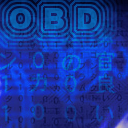OBD:TRAS
|
|

|
| Offset | Type | Raw Hex | Value | Description |
|---|---|---|---|---|
| 0x00 | res_id | 01 16 11 00 | 4374 | 04374-MURCOMaim_screen_stand.TRAS |
| 0x04 | lev_id | 01 00 00 06 | 3 | level 3 |
| 0x08 | int32 | 01 15 11 00 | 4373 | link to 04373-MURCOMstand_fire_arc.TRAM |
| 0x0C | float | DB 0F C9 3F | 1.5708 | "left" keyframe size (in radians) |
| 0x10 | float | DB 0F C9 3F | 1.5708 | "right" keyframe size (in radians) |
| 0x14 | int16 | 01 00 | 1 | number of "left" keyframes |
| 0x16 | int16 | 01 00 | 1 | number of "right" keyframes |
| 0x18 | float | 92 0A 86 3F | 1.0472 | "down" keyframe size (in radians) |
| 0x1C | float | 92 0A 86 3F | 1.0472 | "up" keyframe size (in radians) |
| 0x20 | int16 | 01 00 | 1 | number of "down" keyframes |
| 0x22 | int16 | 01 00 | 1 | number of "up" keyframes |
- Keyframes
- The aiming screen (zone comprised between the extreme values of the aiming vector) is divided in a few zones.
- (commonly 4, 8 for most rifle aiming screens, 2 for prone pistol aiming)
- Keyframes are placed at the nodes of that grid: commonly 9, 15 for most rifle aiming screens, 6 for prone pistol aiming.
- The corresponding bone rotations are stored in the associated TRAM. Not versus time like in ordinary TRAMs but as a list.
- For a regular aiming screen (9 key frames), the storage is as follows:
- aiming high and to the left
- aiming high
- aiming high and to the right
- aiming to the left
- aiming straight ahead
- aiming to the right
- aiming low and to the left
- aiming low
- aiming low and to the right
- All these take up one frame each, for every affected bone.
- The last frame is duplicated at the end of the track. Not sure it's actually needed.
- The bones (body parts) affected by the keyframes are specified in the body of the TRAM.
- Overview
- See HERE for now.
| ONI BINARY DATA |
|---|
| TRAM << Other file types >> TRBS |
| TRAS : Totoro Aiming Screen |
| Character file |
